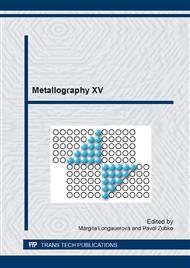p.279
p.284
p.288
p.295
p.301
p.306
p.311
p.319
p.325
Influence of Microstructure and Defect Population on the Fatigue Performance of Cast A356-T6 Automotive Components
Abstract:
In the paper fatigue specimens are extracted from different regions of cast aluminum cylinder heads produced by two foundries. A high strength region and a low strength region were identified within the cylinder head and the A356-T6 material locally characterized in terms of microstructure and defect population. High cycle fatigue testing according to a reduced staircase method was performed to determine the local fatigue strength at 107 cycles in the cylinder heads of the two foundries. The implications of the experimental observations are discussed.
Info:
Periodical:
Pages:
301-305
Citation:
Online since:
April 2014
Authors:
Keywords:
Price:
Сopyright:
© 2014 Trans Tech Publications Ltd. All Rights Reserved
Share:
Citation:


